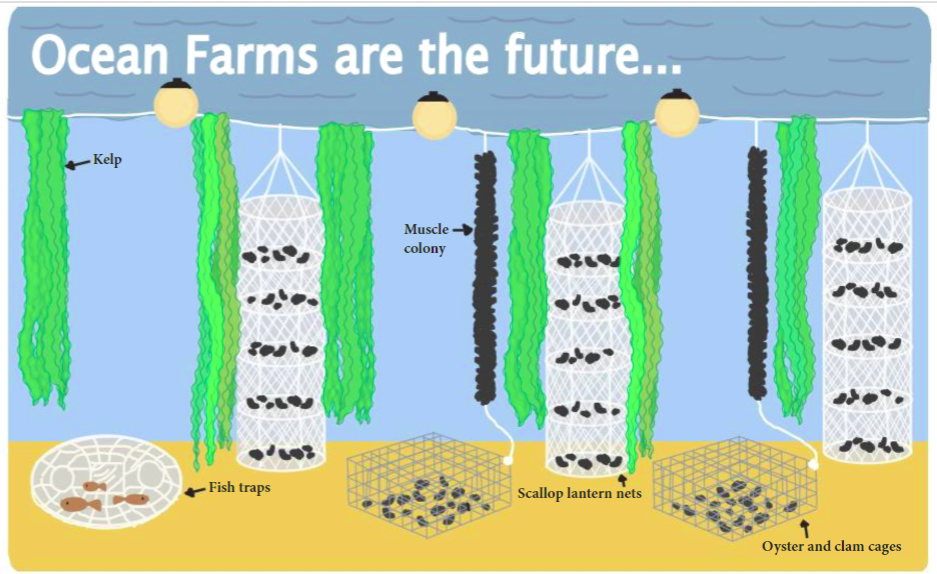Sustainable seafood: ocean farms offer greener food production

SUSTAINABLE FOOD SOURCING. One of the main advantages of using ocean farms is the ability to source food sustainably. The kelp and shellfish grow naturally with the ocean and do not require any harmful additives to thrive.
Vertical rows of seaweed and mussels hang from anchored ropes deep beneath the ocean’s surface. They are left untended; the only resource needed for these lifeforms to grow is the ocean itself. This is an ocean farm.
It might seem alien–using the ocean as a main source of food–but the products of ocean farms can provide all the nutrients necessary for humans to thrive.
Beyond the novelty of eating something from the ocean, ocean farms are far more sustainable than a normal land farm. Ocean farms are an environmentalist’s dream. They eliminate the need for fertilizers, antibiotics, and pesticides. While these farms do provide food, their main benefit is to the environment. Ocean farms do more than just having zero carbon emissions; species on an ocean farm absorb carbon dioxide, resulting in a “negative carbon footprint.”
The majority of an ocean farms grow kelp because of the speed at which it grows and its natural adaption to the ocean environment. Kelp soaks up five times as much carbon as land plants do, and it is a great example of the possible benefits which an ocean farm can provide. Additionally, kelp is one of the only vegetables that have high levels of both protein and vitamin D.![]()
While ocean farming has been around for awhile, the need for a more environmentally and ecologically friendly form of agriculture has grown exponentially in the wake of climate change. Humanity’s increasing impact on the ocean has left scars in its ecology.
A front-running new form of ocean farm, GreenWave’s 3D ocean farm, is making an admirable effort to heal those scars. Like many ocean farms, GreenWave’s Ocean farms grow different forms of seaweed and shellfish.
Unlike other types of ocean farming, such as salmon farms, shellfish and kelp farms require no antibiotics nor a continual food source, and they pose no real threat to the ocean.
Two years ago, GreenWave’s 3D Ocean farm won the $100,000 2015 Fuller Challenge: an enormous sign of the future potential which scientists see in ocean farms.
Elizabeth Thompson, the executive director of the institute which awards the prize said, “We’re looking for ideas that are replicable and verifiable.”
Just this November, Time Magazine also announced that GreenWave’s 3D Ocean farm was one of their 25 best inventions of 2017.
Ocean farms are not some theoretical solution to climate change, they are a real and concrete step for protecting the ocean’s environment and growing food in a sustainable way.
This story is reprinted from The Rubicon Print edition: Dec 12, 2017
Jack Benson is the current Editor-in-Chief of The Rubicon. This is his fourth year on staff. He sees the Rubicon as an important outlet for sharing student...
Jasper Green is the In-Depth Editor for the 2018-2019 season of The Rubicon, and it is his fourth year on staff. Green believes in the power of sharing...